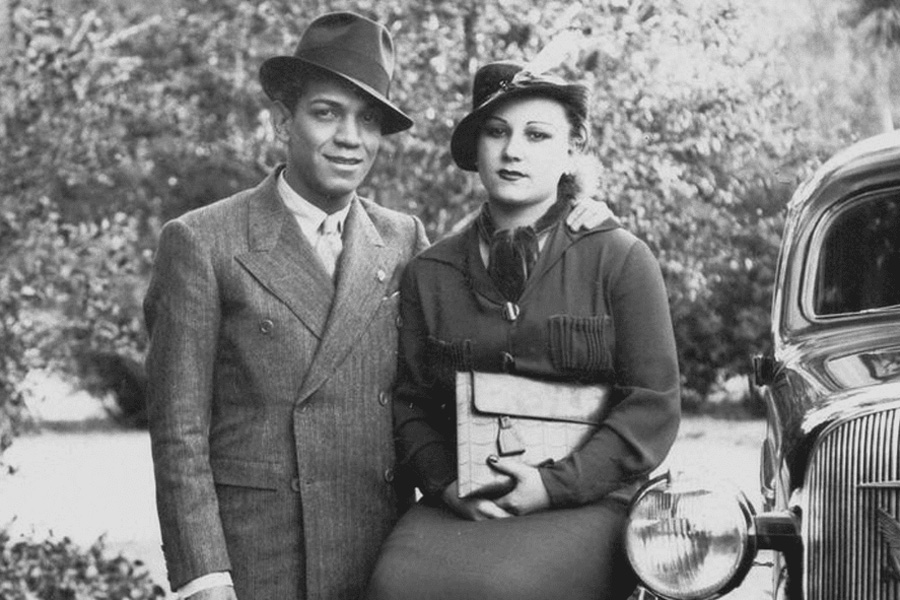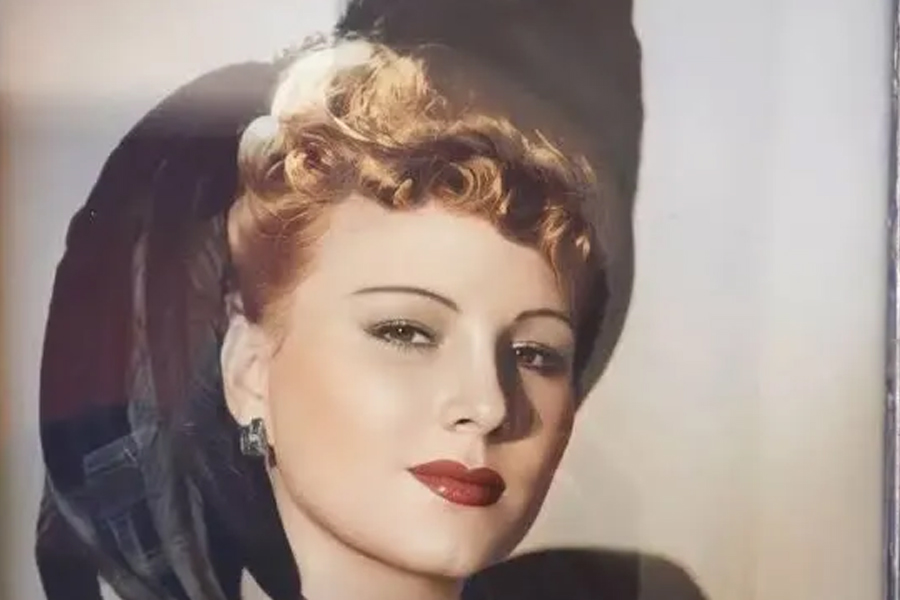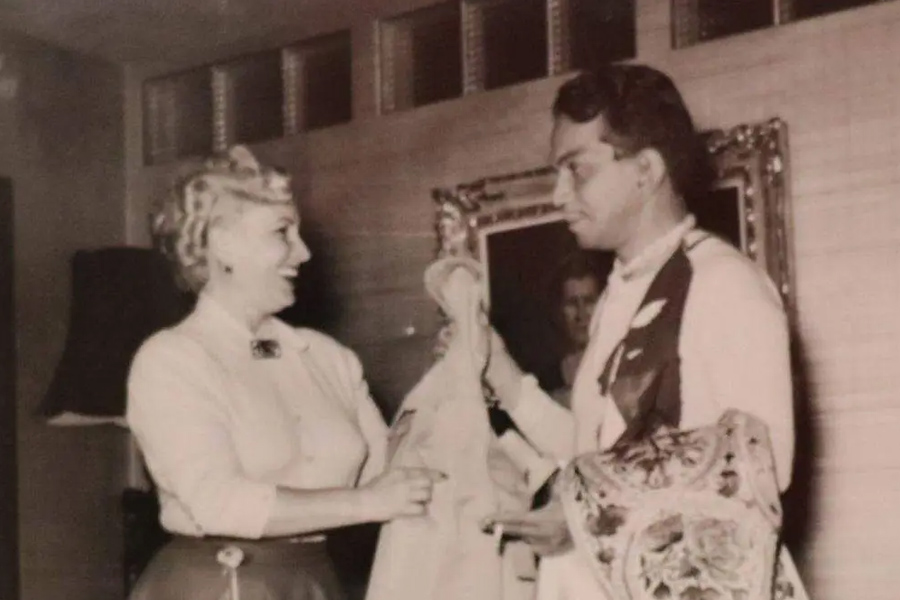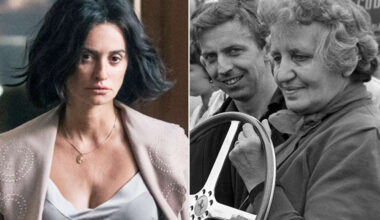Basic Information
| Field | Details |
|---|---|
| Full name | Valentina Ivanova Zuvareff |
| Also known as | Valentina Ivanova; often rendered as Zubareff or Zukova in Spanish-language materials |
| Born | c. 1915–1917, Moscow, Russia (dates reported vary) |
| Died | January 1966, Mexico City, Mexico (commonly reported as bone cancer) |
| Nationality | Russian-born; settled in Mexico |
| Occupation | Dancer, actress (carpa/tent-theatre performer) |
| Notable for | Longtime spouse of Mexican comedian Mario Moreno “Cantinflas”; member of the Russian family troupe Carpa Valentina |
| Spouse | Mario Moreno Reyes (“Cantinflas,” 1911–1993) |
| Marriage (civil) | 27 October 1934, Mexico City (some later retellings cite 1936) |
| Children | Adopted son: Mario Arturo Moreno Ivanova (1960–2017) |
| Parents | Gregor Ivanov (variant: Ivanoff); Ana Zukova (variant: Zhukova) |
| Siblings | Olga; Tamara — performing partners in the Zubareff sisters’ act |
| Troupe | Carpa Valentina (Russian family troupe in Mexico) |
A Russian dancer in Mexico’s carpas
Picture a tent glowing at dusk, canvas breathing like a living thing, and inside, a swirl of steps, songs, and comic turns. That was the carpa world into which Valentina Ivanova Zuvareff stepped as a young dancer. Born in Moscow during the tumult of the 1910s, she belonged to a Russian family that left the wake of revolution and found a second life in Mexico’s traveling theater circuit. Their marquee—Carpa Valentina—became both banner and biography, with Valentina performing alongside her sisters, Olga and Tamara, in routines remembered as the Trío Zubareff.
The carpas were schools of craft and crucibles of invention. Between the 1920s and early 1930s, the troupe toured neighborhoods and plazas, stitching themselves into Mexico’s popular culture. In this tight-knit world of acrobats, dancers, writers, and comics, the Ivanova/Zubareff family formed a small artistic republic, and Valentina emerged as a central presence—poised on stage, disciplined off it, and woven into the troupe’s identity.
Meeting Cantinflas: 27 October 1934 and after
The carpa circuit did not only create art; it also created families. Mario Moreno—a young acrobat and comic still experimenting with the character that would become “Cantinflas”—worked the same tents and the same boards. In Carpa Valentina, he met Valentina, and their partnership began. Civil records mark their marriage on 27 October 1934 in Mexico City. Some later retellings float 1936 as the date, perhaps the product of anecdote hardening into print, but the couple themselves lived as husband and wife from the mid-1930s forward.
Their marriage spanned three demanding decades: from the scrappy carpa years to the glare of international fame. As Cantinflas built a film career that vaulted him from neighborhood tents to global recognition, Valentina’s world shifted. She gradually stepped back from public performing, choosing a private steadiness that anchored a life spent amid premieres, press calls, and charity galas. If he was the comet, she was the fixed star at home.
Onstage and offstage: work, discretion, and a private center
Valentina’s professional identity was forged in motion: the counts and lines of dance, the timing of a troupe built on trust. After her marriage, her role turned more domestic and discreet, a common arc for women performers of the era when a partner’s career eclipsed the family spotlight. Yet her artistic roots were never erased; photographs and recollections place her at rehearsals and backstage, fluent in the grammar of show business and respected by colleagues who remembered the discipline of Carpa Valentina.
From October 1934 to January 1966 is a little more than 31 years—a long marriage by any measure, longer still in an industry fueled by travel and attention. Friends recall her reserve, her loyalty, and her composure amid storm and sunshine.
Adoption and heirs: the Moreno–Ivanova line
In 1960, Valentina and Mario expanded their family by legally adopting a son, Mario Arturo Moreno Ivanova. He grew up in the glow of an icon and the quiet of a private household, a child of two worlds. Over the decades, rumors about his biological parentage circulated in entertainment lore—especially the repeated name of an American woman, often listed as Marion Roberts. Those stories remain contested; the point that stands firm in the public record is his adoption and his place as their son.
Mario Arturo later had children of his own, and the Moreno–Ivanova line continued, sometimes in the public eye, sometimes away from it. Like many prominent families, their story includes celebration and heartbreak, courtrooms and embraces. Through it all, Valentina’s name is the hinge on which a private family ties into a public legend.
Key family members
| Name | Relation | Years | Notes |
|---|---|---|---|
| Mario Moreno “Cantinflas” | Husband | 1911–1993 | Iconic Mexican comedian and actor; married Valentina in 1934 |
| Mario Arturo Moreno Ivanova | Adopted son | 1960–2017 | Central heir figure; frequently in later media coverage |
| Olga (Zubareff/Ivanova) | Sister | — | Performed with Valentina; later linked to writer/actor Estanislao Shilinsky |
| Tamara (Zubareff/Ivanova) | Sister | — | Member of the Trío Zubareff act |
Names, spellings, and a paper trail
Why so many spellings for one woman? The answer lies in transliteration and migration. A Russian name crossing borders acquires accents of each stop. Ivanova becomes Ivanovna in one retelling, Zubareff echoes as Zuvareff, and Zhukova softens to Zukova. In Mexico’s Spanish-language press, the family’s surname often appeared as Zubareff or Zukova, approximating Russian sounds on Spanish typewriters.
The administrative record centers on “Valentina Ivanova,” the dancer who married Mario Moreno and built a life in Mexico City. Cultural memory, meanwhile, keeps the carpa versions alive: the Zubareff sisters, the Carpa Valentina title, the hybrid spellings that speak to a family’s journey across languages and landscapes.
Health and farewell
Valentina’s final chapter came early in 1966, when she died in Mexico City after illness commonly reported as bone cancer. She was likely in her late forties or early fifties, depending on which of the two principal birth years—1915 or 1917—one follows. The precision of a calendar cannot fully hold a life, but it can mark a loss. For Cantinflas, it meant the end of a partnership that had framed his rise; for the carpa generation, it marked another quiet goodbye to an artist who had learned her craft under canvas.
Cultural echoes and ongoing remembrance
Though she did not seek the camera’s center, Valentina Ivanova Zuvareff remains present in the orbit of Cantinflas’s enduring fame. Biographical programs, family interviews, and retrospective features revisit the formative carpa years, where Valentina was not a supporting character but part of the original ensemble. The 2014 biopic “Cantinflas” rekindled interest in those beginnings; so too did later coverage of the Moreno family’s legal and personal stories.
In photographs, she is poised and composed, the portrait of a dancer accustomed to lines and balance. In prose, she appears as steadying presence, the person who carried a piece of Russia into Mexico and stitched both into a home. The tent has long since been folded, but its silhouette still appears when people speak of the early days—when a future legend met a Russian dancer, and a family history began.
Timeline
| Date | Event |
|---|---|
| c. 1915–1917 | Birth in Moscow, Russia (reports vary on the exact date) |
| 1920s | Family leaves Russia; the troupe that becomes Carpa Valentina performs across Mexico |
| Late 1920s–early 1930s | Valentina dances with sisters Olga and Tamara; Mario Moreno works in the carpas |
| 27 Oct 1934 | Civil marriage of Valentina and Mario Moreno in Mexico City |
| 1930s–1950s | Valentina steps away from public performing, focusing on private life alongside Cantinflas’s rise |
| 1960 | Adoption of Mario Arturo Moreno Ivanova |
| Jan 1966 | Death of Valentina in Mexico City |
| 1993 | Death of Mario Moreno “Cantinflas” |
| 2010s–2020s | Renewed public interest via biopics, family interviews, and retrospectives |
FAQ
Who was Valentina Ivanova Zuvareff?
A Russian-born dancer and actress in Mexico’s carpa circuit, she became the longtime wife of comedian Mario Moreno “Cantinflas.”
When did she marry Cantinflas?
Their civil marriage is recorded for 27 October 1934 in Mexico City, though some later narratives cite 1936.
Did she continue performing after marriage?
Only briefly; she largely stepped back from the stage and maintained a low public profile during Cantinflas’s film career.
Did she have children?
She and Cantinflas legally adopted a son, Mario Arturo Moreno Ivanova, in 1960.
What did she die of, and when?
She died in January 1966, with bone cancer commonly reported as the cause.
Why are there different spellings of her name?
Transliteration from Russian and Spanish-language adaptations produced variants like Ivanova/Ivanovna and Zubareff/Zukova.
What is Carpa Valentina?
A traveling tent-theatre troupe formed by her family, part of Mexico’s popular entertainment circuit where she first performed.





